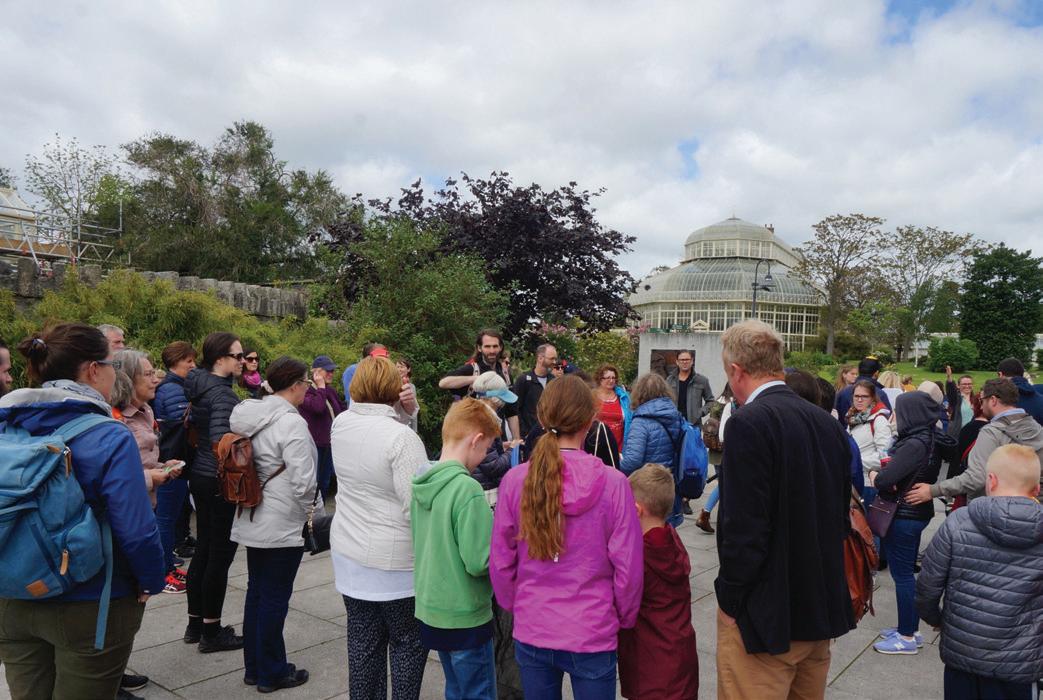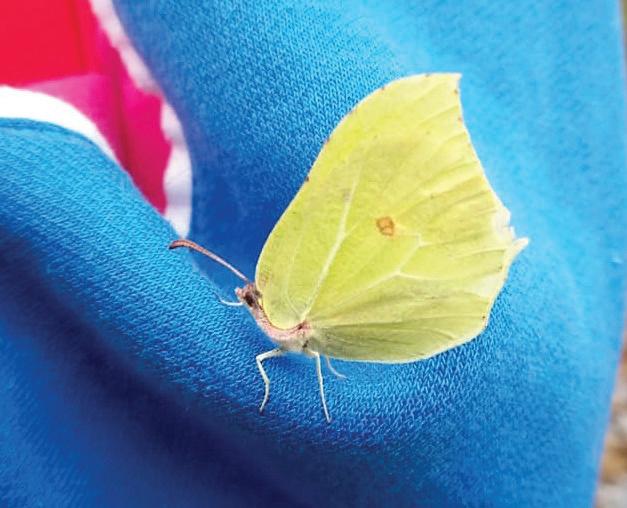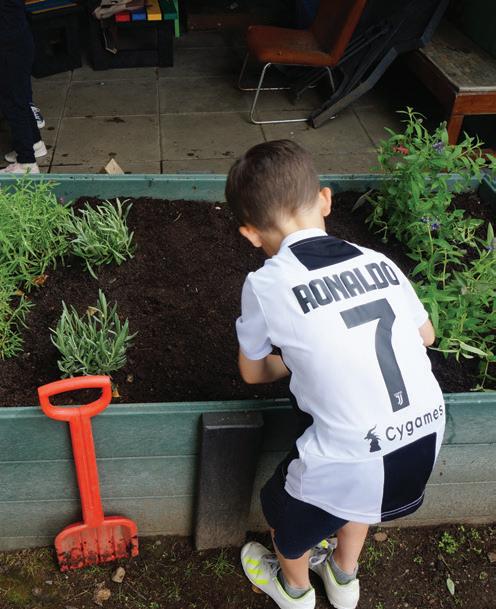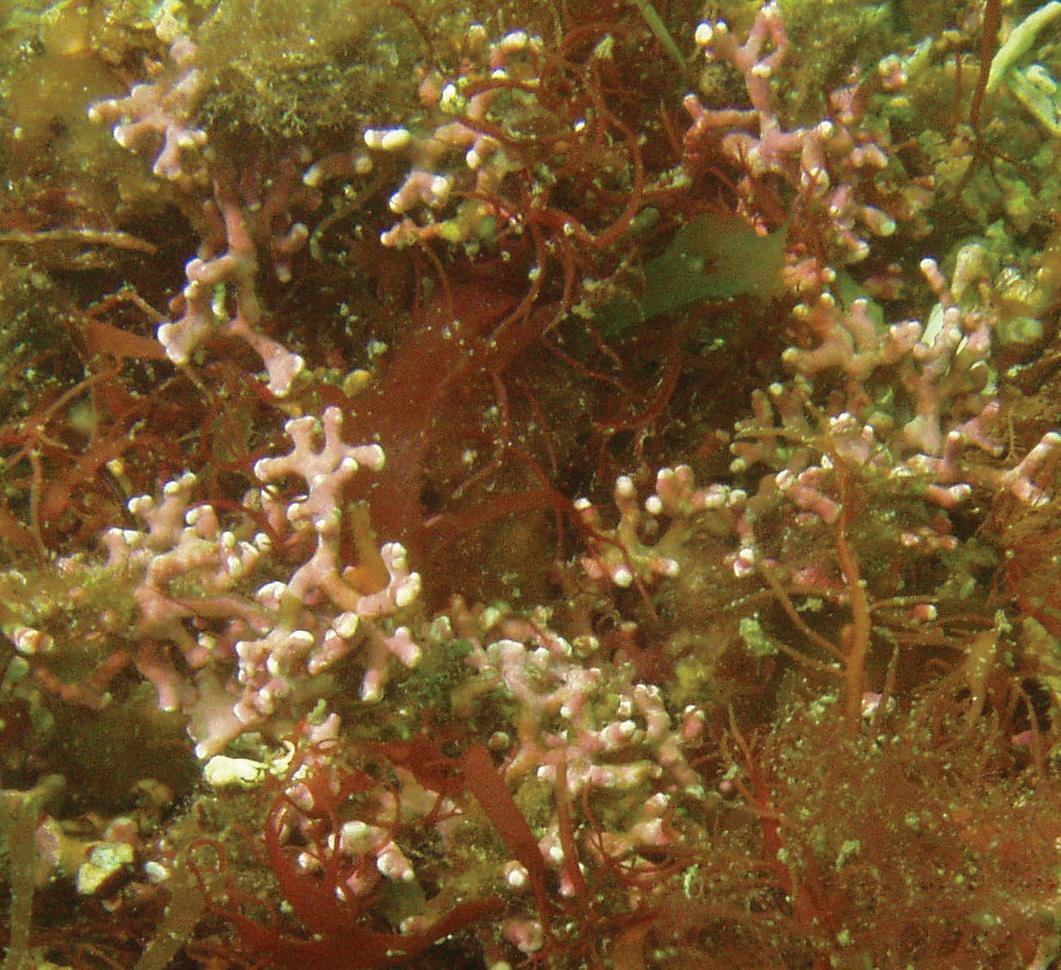
7 minute read
IWT NEWS
IWTNEWS
Activity Update
People for Bees, Botanic Gardens flagship event, credit Jacinta Jardine
By Kieran Flood, IWT Coordinator.
Autumn is upon us and the short Irish summer has retreated once more. Summer is a great opportunity to get outside and explore our wonderful wildlife, and that is just what we have been doing at the IWT. Here is a brief update on our activities from the summer just passed.
In this age where humanity’s severe impact on the planet is unquestionable, working with people is the only way we can save our wildlife. While at the IWT we continuously lobby for the essential change needed from our political leadership, we also greatly value the change that can be brought about by an informed and engaged public. So this summer, the IWT Staff, branches and volunteers were busy engaging thousands of people across Ireland with Irish wildlife and the conservation issues affecting it.
Throughout summer we have been progressing our flagship projects “People for Bees” and “Bigger and Better”, our new marine protection project. We have been out and about running wildlife events with our wonderful branch network as well as meeting thousands of people at the Bloom in the Park festival.
This National Biodiversity Week our branches and staff ran events highlighting woodland ecology, coastal seaweeds, Irish bats, peatland rehabilitation and marine protected areas. All events were free and open to the public. Biodiversity Week happens every May and is a great opportunity to engage the public with wildlife conservation issues. Although, that said, here at the IWT, it is biodiversity week every week and our branches run great events every month of the year. Notable events this summer were trips run by Dublin, Kerry and Galway branches to the Ireland’s Eye, Blasket and Inis Mor Islands. Our People for Bees project aims to educate the public about what they can do to help save our bees as well as support the All Ireland Pollinator Plan. This summer we ran our usual bee monitoring and habitat creation workshops. These were hosted by a diverse range of groups from Letterkenny IT, to Tidy Towns groups, the Tralee Bee

School planting, credit Kieran Flood

Biodiversity Week Galway Woodland Walk Brimstone Butterfly

Biodiversity Week Kilminchy Wildlife Enhancement event, credit Brian Gaynor
Highway, community gardens and a community health forum. We also worked with school groups and ran a booked-out flagship bee training event at the National Botanic Gardens where we ran our largest outdoor bee training session to date, taking almost 100 people around the gardens to practise their bee monitoring skills. People are the key to this aspect of the Irish Wildlife Trust work. We would like to thank our branches and other volunteers, the communities that hosted our workshops as well as all the IWT members that came out to our events. It is always great to see familiar faces and meet members in person.
Mailing List
To keep up to date with future events, join our digital mailing list to receive a monthly events update. You can join by adding your email to the box on our homepage, www.iwt.ie.
Campaign Update
By Regina Classen (Bigger and Better MPA Project Officer)
Life underwater
The Bigger and Better MPA (marine protected area) campaign, run by the IWT and Coastwatch, has been in full swing this summer. We were able to share our project with the public in Dublin at Bloom and the Rose Festival with lots of interest from young and old. We were also onboard the Irish Whale and Dolphin Group’s vessel, Celtic Mist, and sailed from Dublin to Waterford, stopping in schools along the way to teach children about biodiversity and the importance of marine protection. While some marvelled at the fact that we have such amazing sea life as coral reefs in Ireland, others were even more astounded to learn that these habitats can indeed help regulate our climate.

Irish waters are home to many amazing marine habitats, and many different types of reef. Next to corals, other species that can form reefs include polychaete worms, bivalves like mussels and oysters, or algae including kelp. Other habitat types, including seagrass and maerl (a pink, corallike alga), are also hugely important for biodiversity.
There are several commonalities between these very different seafloor ecosystems. Firstly, the species named above are all considered keystone species, or ecosystem engineers, because where they are present in high densities, they form a three-dimensional framework on top of sediments such as sand, gravel or boulders. This framework then allows many other species to move in and make the habitat their home, thereby increasing biodiversity. What would otherwise have been a barren seafloor is transformed into a sea life haven. Secondly, all of these habitats are very rich in carbon. The shells of mussels and oysters and the skeletons of corals, maerl and even crustaceans all contain calcium carbonate, or chalk, locking in carbon throughout their lifetime. Marine plants such as kelp and seagrass also store carbon by drawing it down from the atmosphere through photosynthesis.
The third commonality is the fragile nature of these ecosystems, making them very vulnerable to structural damage from mobile bottom fishing gear. While other stressors exist that may be affecting these
Are you a regular diver or snorkeller? You might be able to help us. Harmful fishing practices such as bottom trawling can cause damage to seafloor ecosystems. Destruction of certain habitats or harm caused to certain species inside Special Areas of Conservation (SACs) and Special Protection Areas (SPAs) is illegal under EU law. If you come across any damage that you think is worth reporting, please contact us at iwt.marineprotection@gmail.com You can also follow our campaign on Twitter @BiggerBetterMPA

ecosystems, fishing is one that is very easily avoided by proper spatial management of Natura 2000 sites. Ireland’s first marine spatial plan is currently under production, and a draft is expected for public consultation this autumn. We hope that the plan will address the impact of fishing pressure on marine ecosystems and adopt key policies that prioritise the health of the environment when planning new developments. We have highlighted the need for proper MPA management in our consultation submission on the Marine Planning Policy Statement in August, available to download on the IWT website. The Bigger and Better campaign is about appealing to the Irish government to address the issues our oceans face. An oyster reef is a shelter for many species as well as an important carbon sink when alive and
Irish Wildlife Autumn ‘19 healthy. It is not just revenue waiting to be exploited. Equally, what some would observe as a plain and boring mud flat is actually home to a wide array of burrowing invertebrates – the preferred food of many internationally important bird species and not just an empty area waiting to be filled with aquaculture trestles. In the jargon of the government’s Our Ocean Wealth, the value of biodiversity often gets lost.
The NPWS has just published its third report on the Status of EU Protected Habitats and Species in Ireland. This report has to be submitted to the EU every six years in order to monitor the transition to overall Good Environmental Status. It may come as no surprise that, given the small coverage of MPAs (only 2% of the Irish marine region, compared to 29% in the UK and 45% in Germany) and the lack of management of activities inside, marine habitats are showing an overall declining trend. Despite nature laws in place, the environment is degrading with only 2% of habitats showing an improving trend compared to 2013 and with 85% of habitats in unfavourable or bad condition. We understand the importance of healthy marine ecosystems for human kind better than ever before. There is still a lot we do not know, but nobody will argue the fact that we very much depend on the seas to keep providing our dinner, sequester our excess carbon, absorb the increase in temperature and produce 50% of the oxygen we breathe. It should be a no-brainer to provide adequate funding for the designation of MPAs, draw up site-specific conservation measures and hire sufficient staff to monitor the protected sites and enforce the law.










